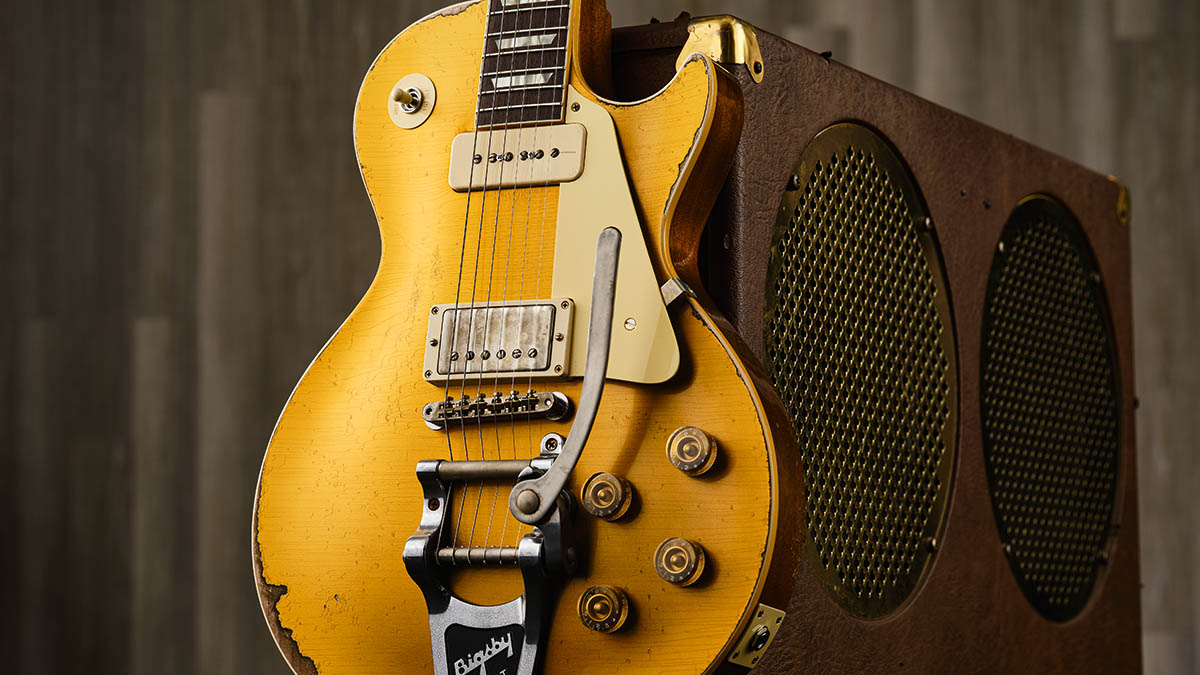Metal For Life: How to Use an Open-String Pedal Tone to Build Heavy Single-Note Riffs
For this lesson, I’ve put together a series of melodic riffs that could be used for a song’s intro, verse, chorus, bridge or solo section, and that utilize an open low E-string pedal tone. A pedal tone is defined as a long held or rearticulated note around which other parts move. As applied to the guitar, a pedal tone usually represents the tonic, or root note, and is played on the lower, often open, strings.
For each example in this column, the open low E string is used as a pedal tone throughout the riff. In FIGURE 1, I play a melodic line on the A string against the open low E pedal. The line is derived primarily from the E Phrygian scale (E F G A B C D) and is played in steady 16th notes, four notes per beat. I begin by striking the open low E along with a D note, fifth string/fifth fret, fretted with the index finger, followed by a hammer-on with the ring finger up to E, seventh fret.

This hammer-on idea is carried through the riff as I move either higher or lower on the fifth string. The lower note is always fretted with the index finger: if the higher note is two frets above, I hammer-on with the ring finger; if it’s one fret above, I hammer with the middle finger. When the open low E string is played by itself, I use pick-hand palm muting for a more percussive attack.
On beat four of bar 2, I move the fretted notes over to the low E string, fretting A, sixth string/fifth fret, followed by a hammer-on up to Bf at the sixth fret. The use of this “flatted fifth,” or tritone, interval lends the riff a bluesy quality, as it is part of the E blues scale (E G A Bf B D). Found three whole steps above (or below) the root note, the tritone was once called, in Latin, Diabolus in musica (the devil in music). It is an interval often employed in metal for its dark, dissonant quality. To me, this riff recalls the sound of Megadeth’s Rust in Peace album, specifically the track “Holy Wars.”

The phrasing of this line is also interesting in that the hammered notes are always followed by four consecutive open low E pedal notes, with the exception of bar 4, where I switch to two consecutive open E notes between hammered notes. Another way to play this riff is with a clear separation between the fretted notes and the open E pedal, à la FIGURE 2. Try both approaches and notice the difference in sound.

Now let’s look at a different riff using the same concept and phrasing, as shown in FIGURE 3. Here, the fretted notes are all played on the low E string and are based essentially on the E blues scale, but I add the second, Fs, as well as the “flatted” second, F natural, to the line, which serves to lend it an overall atonal quality. This harmonically “free” approach—creating a riff that is not based entirely on one specific scale—is very common in metal, exemplified on such albums as Metallica’s Master of Puppets.
Let’s try one more permutation of this, shifting to 12/8 meter, as shown in FIGURE 4. Like FIGURE 1, this riff is based on E Phrygian, and the melody is played primarily on the A string and against the open low E pedal. To make the riff more dramatic, I switch back and forth between palm-muting the open low E notes and allowing the notes on the A string to ring clearly. This riff ends with sliding two-note power chords, fretted on the fifth and fourth strings.
All the latest guitar news, interviews, lessons, reviews, deals and more, direct to your inbox!
